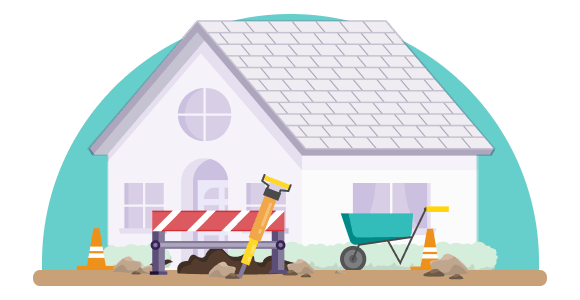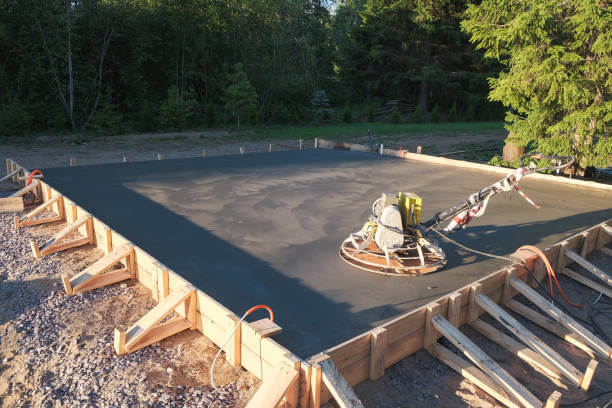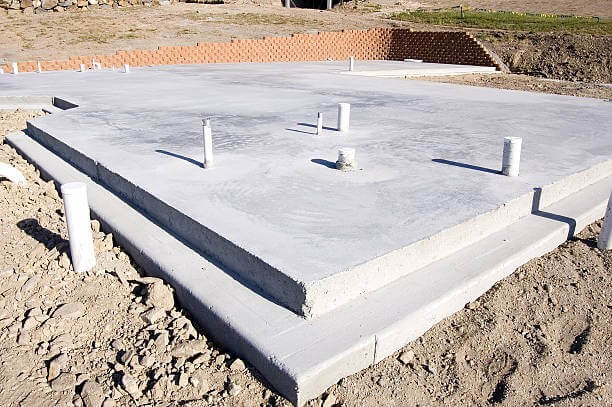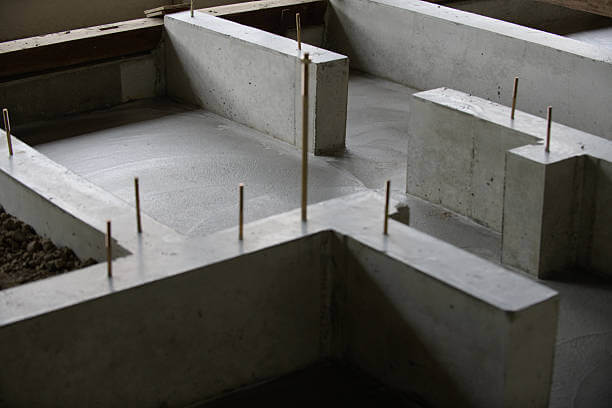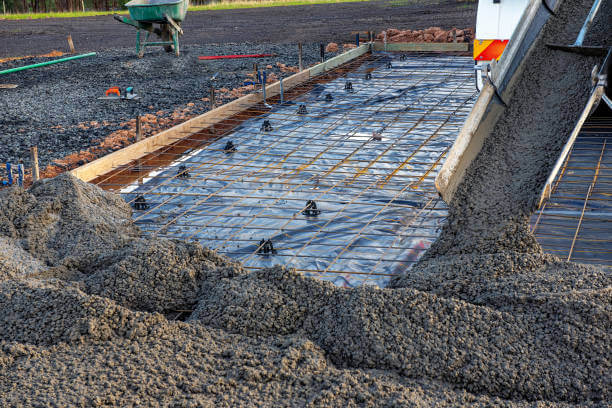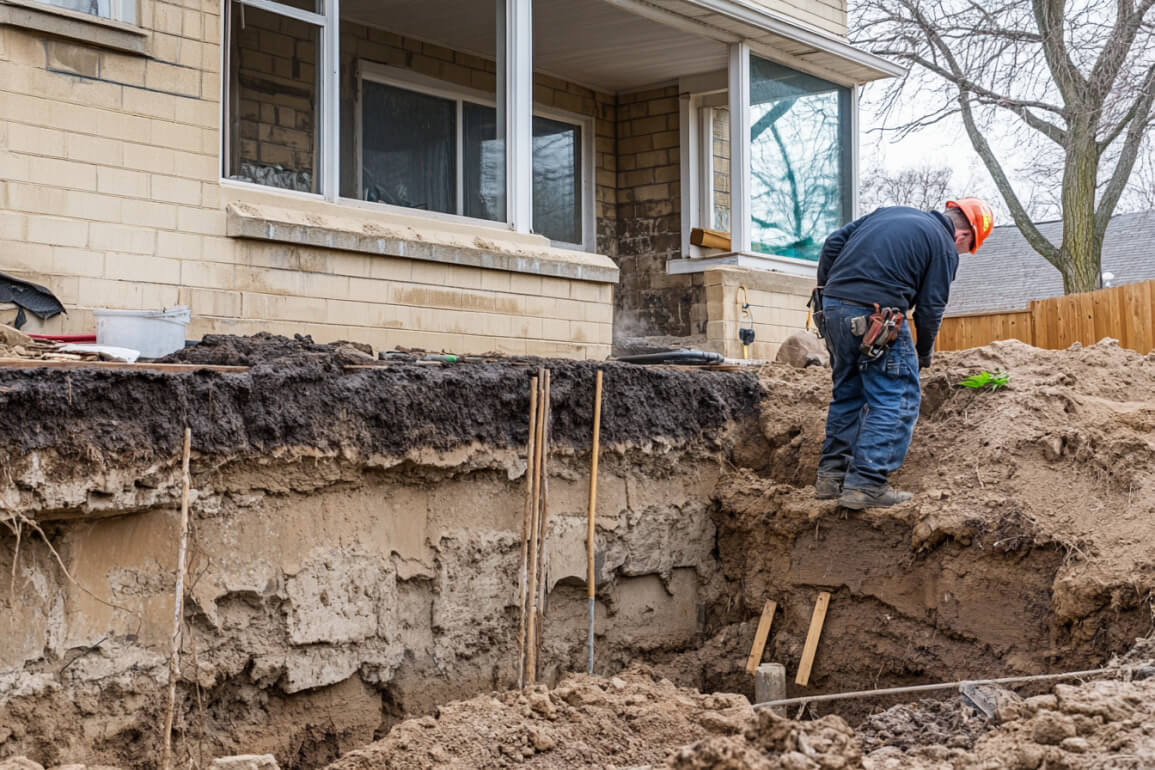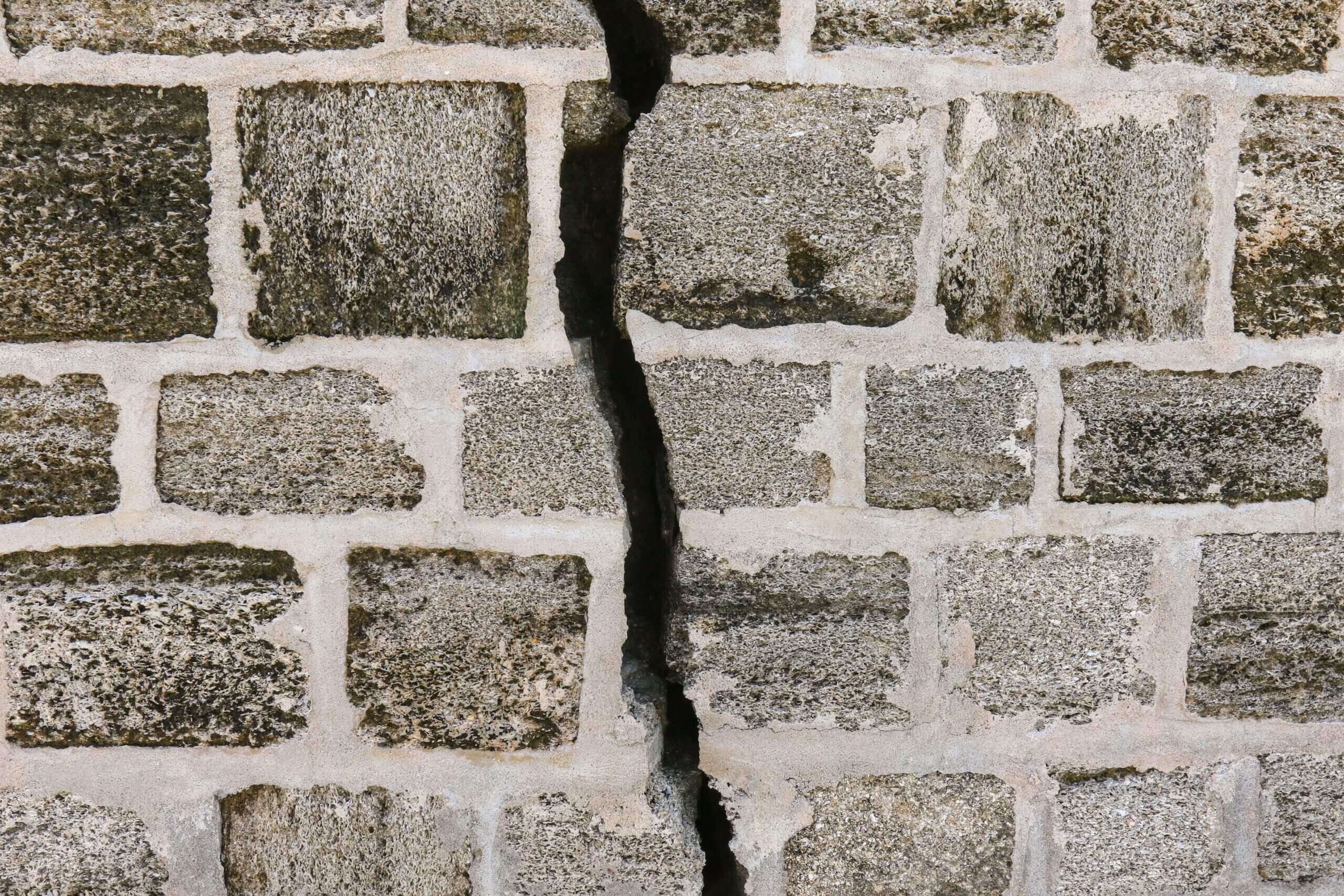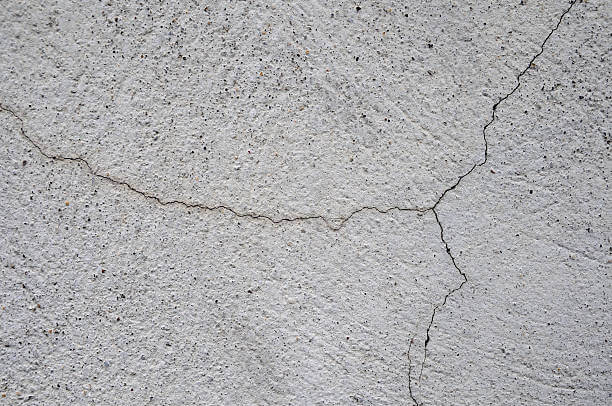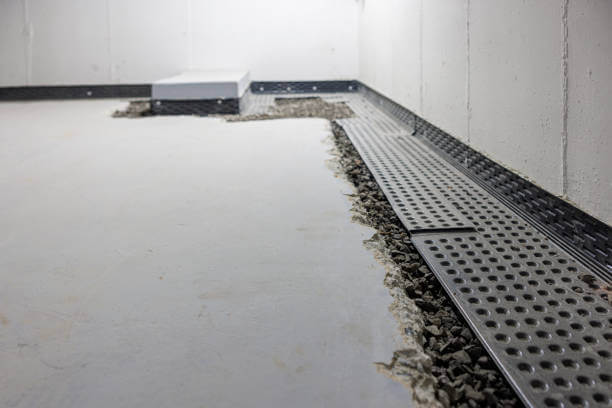Floating Slab Foundations: Overview
A floating slab foundation is a type of concrete foundation that “floats” on the ground rather than being anchored deep into the soil. It’s a simple, cost-effective foundation often used for garages, workshops, sheds, and small homes.
Unlike traditional foundations, a floating slab isn’t supported by deep footings — it rests on a layer of compacted gravel and moves slightly with soil changes, helping prevent major cracking in cold or variable climates.
Key Takeaways
Here’s what to know about floating slab foundations:
- A floating slab is a reinforced concrete pad poured on compacted gravel that “floats” with soil movement.
- Ideal for small or detached structures where a full basement isn’t needed.
- More affordable and faster to install than most foundation types.
What Is a Floating Slab Foundation?
A floating slab is a thick concrete pad poured directly onto a level bed of gravel. The slab isn’t tied into deep footings; instead, it sits atop prepared soil and “floats” with seasonal changes like frost heave or minor ground movement.
Why Homeowners Choose It
Floating slab foundations offer several key benefits:
- Lower cost than a full foundation
- Quick installation (3 to 5 days)
- Excellent for cold climates with freeze-thaw cycles
- Minimal long-term maintenance
Contractors often recommend floating slabs when a building doesn’t require a crawl space or basement but still needs a strong, stable base.
How Does a Floating Slab Foundation Work?
Floating slabs distribute the weight of the structure evenly across the soil rather than concentrating it on deep concrete footings.
Key Structural Layers
Each component in a floating slab foundation plays an important role:
- Compacted gravel base — provides drainage and stability.
- Vapor barrier — blocks ground moisture.
- Optional insulation — protects against frost heave.
- Reinforced concrete slab — supports the structure and serves as the floor.
Because the slab can move slightly with the ground, it resists cracking caused by soil expansion and contraction.
How It Differs from Other Foundations
The table below compares floating slabs to other common foundation types:
| Foundation Type | Description | Best For | Cost Range* |
|---|---|---|---|
| Floating Slab | Concrete pad without footings that “floats” on compacted soil | Garages, workshops, sheds | $6 to $12/sq. ft. |
| Monolithic Slab | One continuous pour with integrated footings | Small homes | $8 to $15/sq. ft. |
| Crawl Space | Elevated floor with access underneath | Homes needing underfloor access | $12 to $20/sq. ft. |
| Full Basement | Deep foundation with livable space | Large homes | $25 to $55/sq. ft. |
*Typical 2025 national averages
When to Use a Floating Slab
Floating slabs are best suited for light structures on stable, well-drained soil.
Best Uses
These are some common applications for floating slabs:
- Detached garages or workshops
- Sheds and storage buildings
- Small cabins or cottages
- Modular or prefab homes
Ideal Conditions
These site conditions support the best performance:
- Well-drained, compactable soil (gravel or sandy loam)
- Level or gently graded site
- No need for utilities beneath the floor
Avoid Floating Slabs If
Certain conditions make floating slabs less suitable:
- The soil is clay-heavy or waterlogged
- You need a basement or underfloor access
- The structure is multi-story or heavy
Get started on your foundations project today with no-obligation estimates.
Pros and Cons of a Floating Slab Foundation
Every foundation type has advantages and drawbacks. Here’s how floating slabs compare:
Advantages
Some pros of floating slabs include:
- Lower material and labor costs
- Quick installation time
- Works well in cold climates
- Low maintenance and durable for small structures
- Provides a finished floor surface
Drawbacks
On the other hand, some cons of floating slabs are:
- Not ideal for large or heavy buildings
- Limited access to plumbing or wiring after pouring
- Soil preparation is critical — poor drainage can cause cracking
- Slight seasonal movement in some climates
How a Floating Slab Foundation Is Built
While simpler than a full foundation, proper site preparation is essential. Here’s an overview of the process most contractors follow:
Step 1: Site Preparation
To begin, contractors prepare the site by:
- Clearing vegetation and debris
- Leveling and compacting the soil
- Marking the slab area with stakes and string lines
Step 2: Install the Gravel Base
Next, contractors will:
- Spread and compact 4 to 6 inches of crushed gravel
- Ensure proper slope for drainage
Step 3: Add Vapor Barrier and Insulation
After the gravel is installed, they:
- Lay plastic sheeting to block ground moisture
- Install rigid foam insulation if frost protection is needed
Step 4: Set Up Forms and Reinforcement
Then, contractors add reinforcement:
- Build wooden forms and place rebar or wire mesh
- Add spacers to keep reinforcement centered
Step 5: Pour and Finish Concrete
Finally, contractors finish the surface:
- Pour evenly, level the surface, and smooth with trowels
- Allow seven days to cure before light use
Timeline: Most floating slabs take three to five days from start to cure.
Cost of a Floating Slab Foundation
Floating slabs are among the most affordable foundation types available today.
Average Cost per Square Foot (2025)
Here’s a breakdown of typical costs:
- Standard floating slab: $6 to $12/sq. ft.
- Insulated or frost-protected: $12 to $18/sq. ft.
Example Project Costs
Estimated prices vary by structure size:
- Single-car garage (240 sq. ft.): $1,400 to $2,800
- Two-car garage (400 sq. ft.): $2,400 to $4,800
- Small cabin or workshop (600 sq. ft.): $3,600 to $7,200
Cost Factors
Several elements influence the final price, such as:
- Soil stability and drainage prep
- Slab thickness and reinforcement type
- Site access and concrete delivery costs
Common Issues and Maintenance Tips
Even though floating slabs are low-maintenance, regular inspections can prevent long-term damage.
Common Issues
Watch for these typical foundation problems over time:
- Hairline surface cracks (normal)
- Settlement cracks from poor compaction
- Water pooling around slab edges
➤ Learn about the cost to repair a foundation.
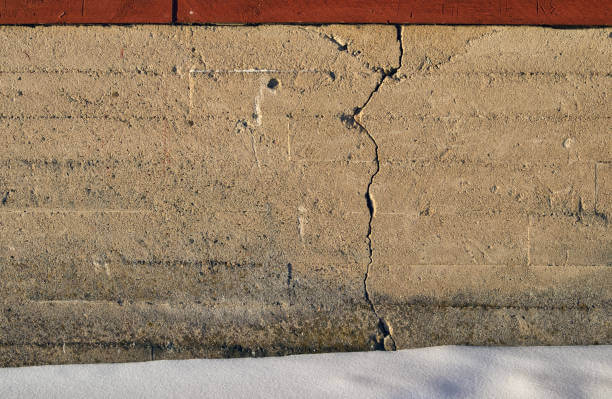
Maintenance Checklist
Follow these foundation maintenance steps to keep your slab in good condition:
- Keep grading sloped away from the structure
- Seal joints and cracks every few years
- Clean gutters and direct runoff away from slab edges
- Inspect for shifting or uneven areas annually
Modernize can connect you with the best foundation pros near you.
Compare top-rated foundations pros in your area.
Read real homeowner reviews, explore qualifications, and view promotions. Modernize makes it easy to browse professionals and find one that will be perfect for your project.
